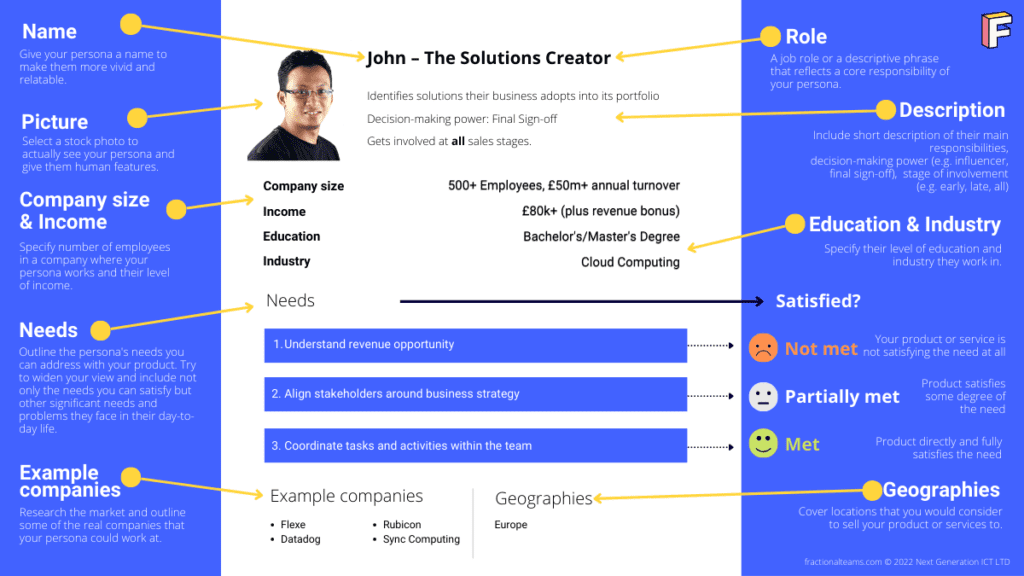How can service providers stay relevant to the market?
Service providers play a critical role in enabling businesses to succeed. With advancements in communications technology reshaping the way we operate, these organisations supply the networks, platforms, and services that make modern business possible. However, many service providers face a significant challenge: the risk of becoming obsolete if they do not shift their focus from their own products to the genuine needs of their customers.
This article explores the importance of adopting a customer-centric strategy and offers a rapid-fire overview of tactics that service providers can take to compete and win.
Table of Contents
The evolution of communications technology
Technology is advancing at an unprecedented pace, fundamentally altering business operations. Communications technology, in particular, has seen significant progress:
- Faster Networks: Enhanced connectivity allows for real-time collaboration and data transfer.
- Advanced Video Conferencing: Teams can meet virtually with high-definition clarity, bridging geographical gaps.
- Cutting-Edge Collaboration Tools: Platforms enable seamless teamwork, project management, and communication.
These technologies are essential, especially in remote and hybrid work environments. Service providers are at the heart of this transformation, yet many are not fully capitalizing on the opportunity.
The customer disconnect
Focusing inward rather than outward
A prevalent issue among service providers is an inward focus when it comes to their products, features, and technologies. While innovation is crucial, launching new features that do not address real customer needs offers little value.
Simplified example: A service provider invests heavily in developing a state-of-the-art communication platform with the latest AI features and enterprise integrations. However, if their target customers are small businesses seeking simplicity and affordability, these advanced features may be overwhelming or unnecessary. The provider’s efforts, therefore, do not align with their market’s actual desires.
This misalignment is not just a hypothetical scenario; it reflects a broader industry trend where providers overlook the specific needs of niche markets or verticals such as healthcare, legal, or logistics.
Customer-centricity — Now more than ever
Increased customer choice and expectations
Customers have more options than ever before. The proliferation of cloud services and the ease of switching providers mean that customer loyalty cannot be assumed. Key factors include:
- Evolving Workforce Expectations: Accelerated by the pandemic, there's been an ongoing shift in working practices across industries.
- Re-evaluation of Technology Stacks: Companies are more open to change if it means better alignment with their needs.
- Demand for Personalised Solutions: Businesses seek partners who understand their unique challenges.
Service providers that fail to recognise and adapt to these shifts risk being left behind.
Embracing a customer-centric approach
What does it mean?
At its core, a customer-centric approach involves placing the customer’s needs, preferences, and experiences at the centre of all business activities. It means understanding their pain points and providing effective solutions.
Strategies for service providers
Active Listening
- Engage Regularly: Use surveys, feedback forms, and direct conversations to gather customer insights.
- Understand Deeply: Truly hear the customer's perspective without letting personal biases interfere.
Personalisation
- Tailored Solutions: Offer services that meet the specific needs of chosen customer verticals or niches.
- Focused Targeting: Concentrate on markets where you can demonstrate the most value.
Proactive Engagement with Existing Customers
- Anticipate Needs: Use product usage metrics to understand customer behaviour and address potential issues early.
- Cross-Department Collaboration: Strengthen feedback loops between support, product, marketing, and sales teams.
Continuous Improvement
- Action on Feedback: Implement changes based on customer input.
- Leadership Example: Product and marketing management should lead initiatives to refine and improve services without fear of proposing new directions.
Avoiding common pitfalls
Delegation and leadership challenges
Many businesses struggle because executives do not delegate product and marketing strategy effectively. Conversely, they may not take the time to understand customer needs and might be too influenced by vendors and partners with their own agendas.
However, it’s difficult to create a positive environment for delegation if toxicity exists within teams or leadership, and if these internal issues are not addressed, it will only hinder growth. Developing transparency and trust within organisations can be one of the biggest drivers of productivity and staff satisfaction if you get it right.
Gaining deeper customer insights
-
Develop Customer Personas
Create comprehensive profiles of ideal customers, including industries, roles, challenges, and goals. Write each of these down using tools like a persona template, and then share them with all team members to ensure a unified understanding.
-
Map the Customer Journey
Outline every interaction a customer has with your company, from initial contact to post-purchase support. This is often known as the “lead-to-cash-to-care” process. Then look for opportunities to improve at each stage.
-
Create Open Communication Channels
Schedule regular meetings or calls to discuss experiences and gather feedback. If you don’t have time for this, try implementing tools like in-app surveys or creating support communication channels to make it easy for customers to share their thoughts.
-
Adopt Agile Practices
Focus on being agile rather than merely doing agile. It's about an attitude of flexibility, not just processes. Then be prepared to adjust products and services based on feedback and market changes. Customers will respond positively if they see feedback being implemented.
-
Build Strong Relationships
Make customers feel valued and understood with personalised interactions. Where possible, also be open about processes, pricing, and any changes that may affect customers to ensure their feedback will be more comprehensive and useful.
The role of marketing in a customer-centric culture
Marketing is not just about promoting products; it’s about communicating value, building trust, and maintaining positive relationships.

Content Strategy
Use blogs, white papers, and webinars to inform customers about industry trends and solutions.

Customer Testimonials and Case Studies
Highlight how your services have positively impacted other businesses. Use real-world examples to demonstrate value.

Social Media and Community Engagement
Search for the right platforms: LinkedIn and Twitter are great, but influencers and decision makers might be active on Reddit, Quora or more niche forums.
Active Participation: Engage with customers on platforms relevant to your industry.
Responsive Interaction: Address comments and concerns promptly.
Challenges to overcome
Transitioning to a customer-centric model may require a company-wide effort to undergo a significant cultural shift. It’s important to take this opportunity to confront and resolve any toxicity or resistance within teams or leadership, and make strong (often difficult) decisions where obstacles seem insurmountable.
The consequences of inaction
Service providers who ignore the need for a customer-centric approach risk increased churn, reputational damage and missed revenue opportunities.
Dissatisfied customers may simply switch to competitors who seem to have a deeper understanding of their needs and, on their way out, may spread negative feedback to the wider market. Moreover, a lack of alignment with customer needs can result in lost (or undiscovered) new business opportunities, leading to flat or declining ARPU and top-line revenue.
Final Thoughts
Embracing a customer-centric approach is not just beneficial—it’s imperative for survival and success in today’s competitive market. Service providers must:
- Evaluate Current Practices: Honestly assess whether they are truly putting customers at the centre.
- Implement Strategic Changes: Adopt the strategies outlined to better meet customer needs.
- Encourage a Positive Culture: Ensure the internal environment supports growth and innovation.
By integrating and adapting products and technologies into solutions that genuinely help customers succeed, service providers can position themselves for long-term success.
This article has been written to support an episode of the same name in the Grow2Market podcast series, dedicated to exploring sales and marketing strategies in the B2B tech industries.
Please don’t hesitate to reach out to us with any questions, comments, or support with any of the topics addressed.
Tune in to the podcast!
Tune in to the episode 1 of our Grow2Market series to learn how your content can effortlessly attract clients. On top of that, see a comprehensive step-by-step instruction on how to create an article on an industry-specific topic in just minutes.
Tim Meredith
Hi! I'm Tim Meredith, CEO at Fractional Teams. I write about the latest industry insights and give advice on Unified Comms development and growth.

